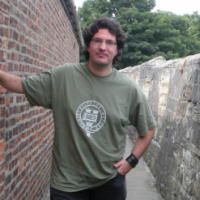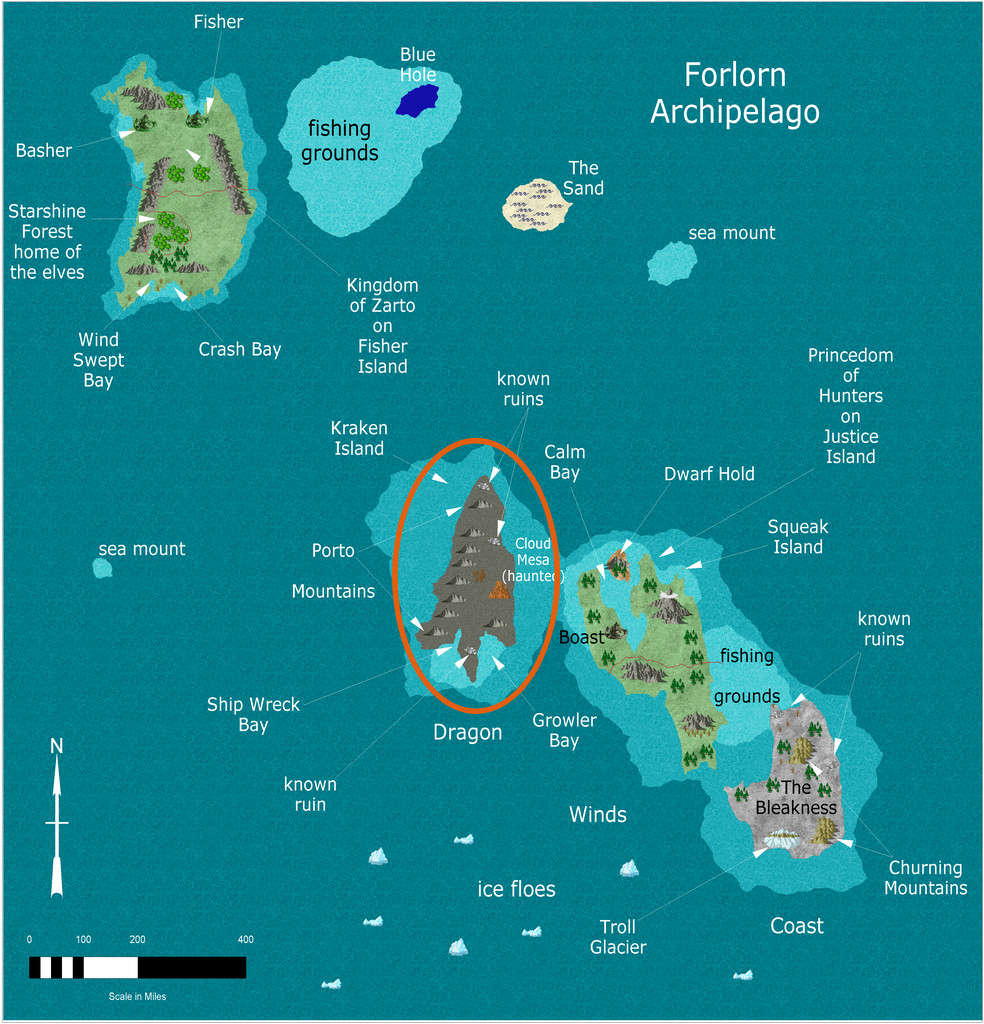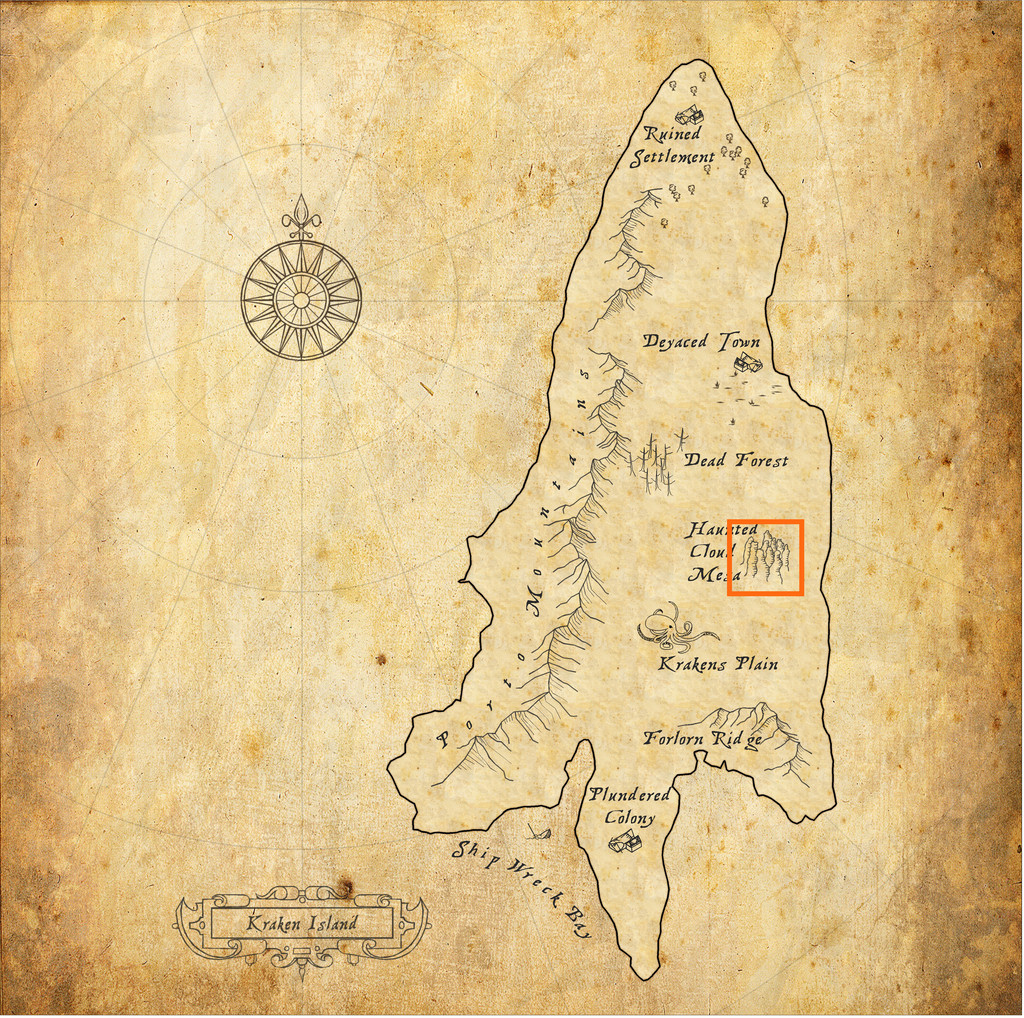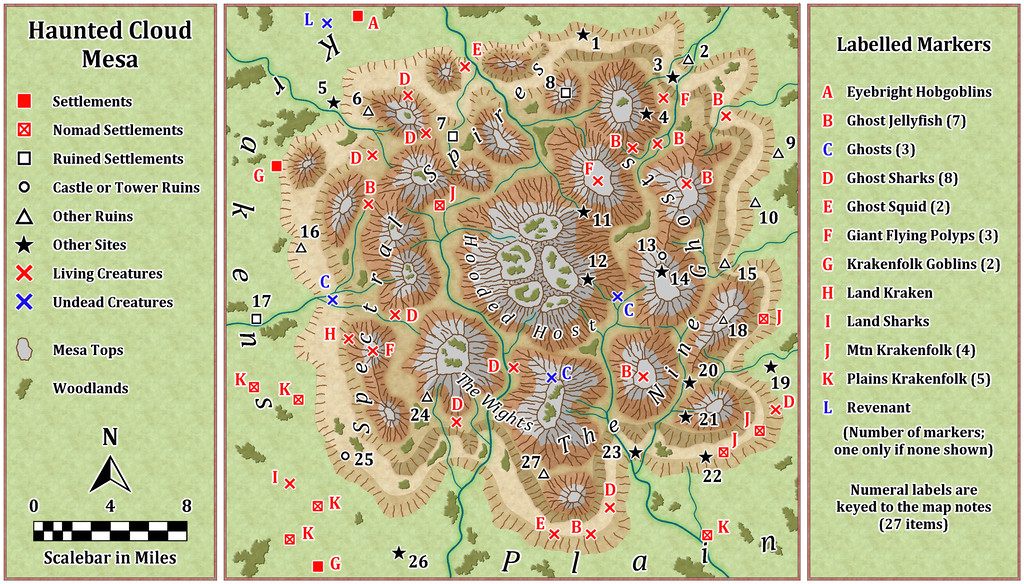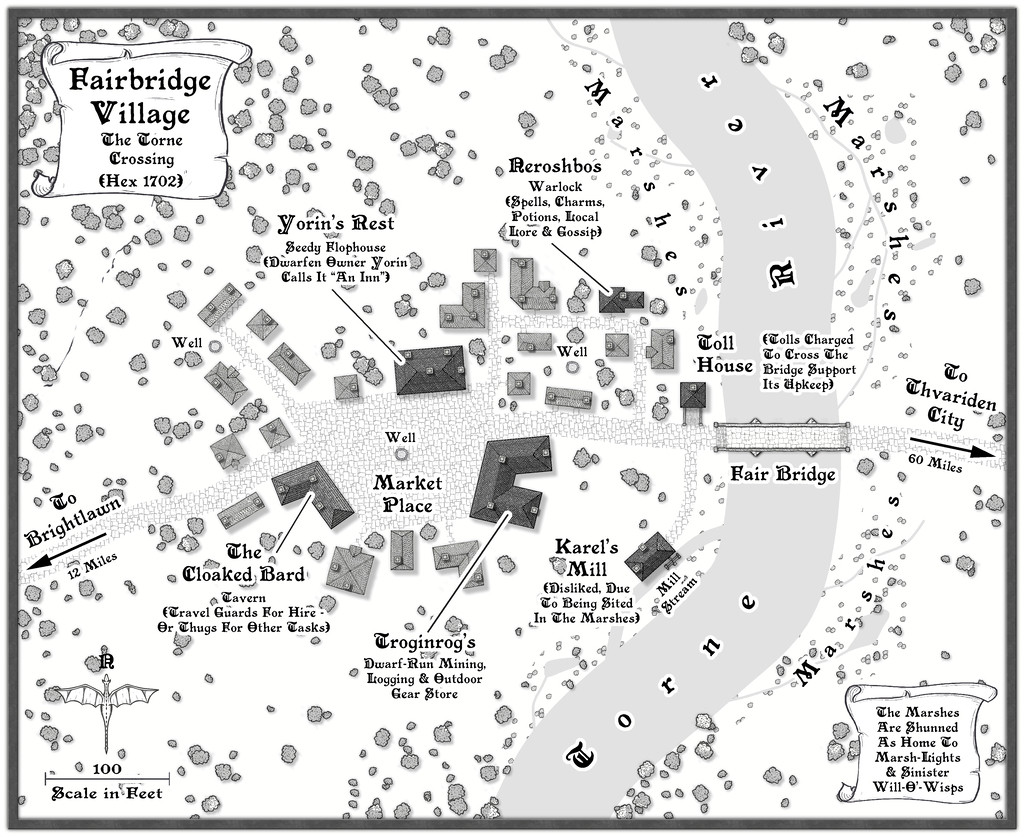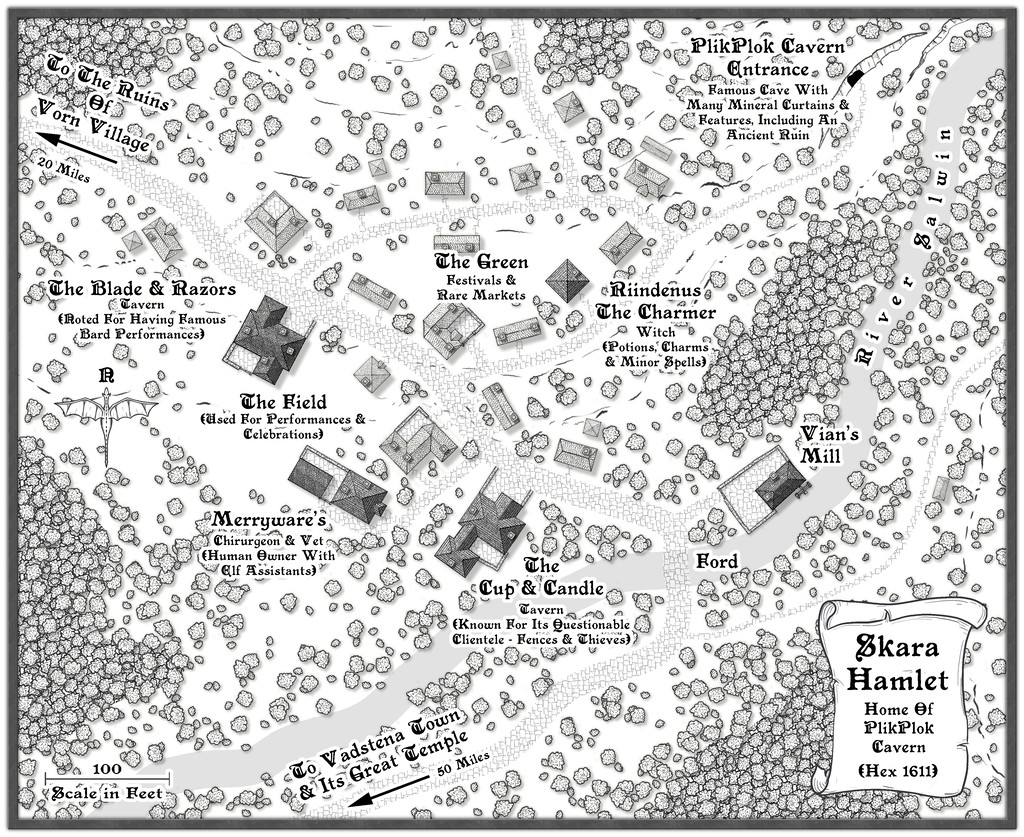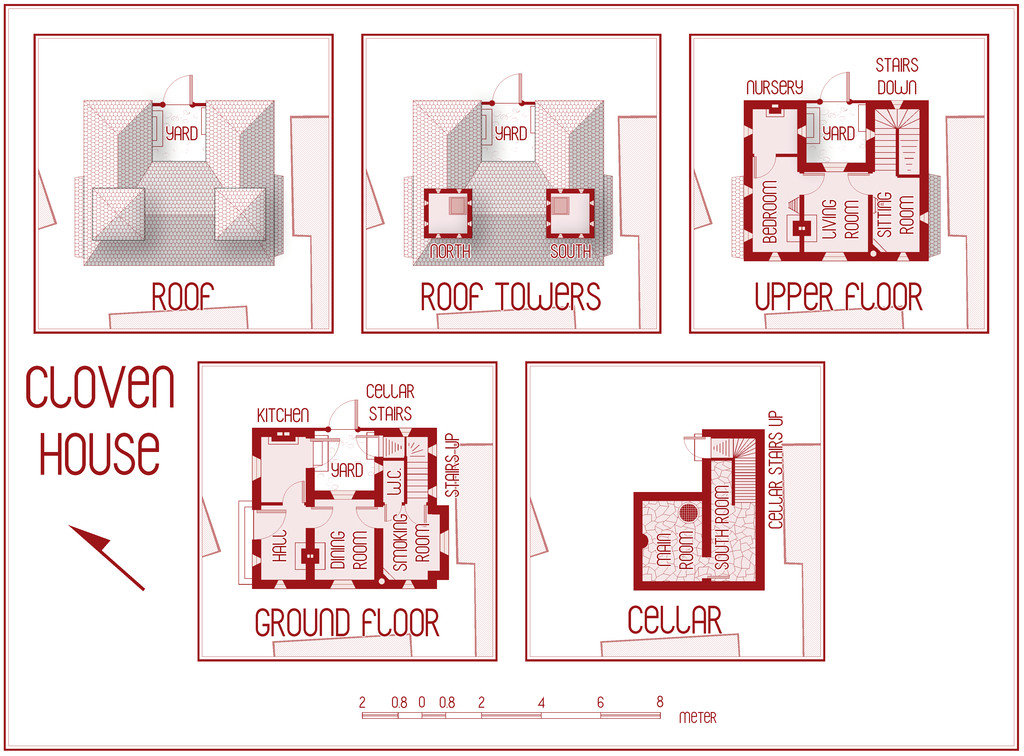
Wyvern
Wyvern
About
- Username
- Wyvern
- Joined
- Visits
- 3,151
- Last Active
- Roles
- Member
- Points
- 5,380
- Rank
- Cartographer
- Badges
- 24
-
Community Atlas 1000th map Competition - Please Vote (Even if you didn't participate yourself)
As usual with such competitions, there are far too many entries deserving of the top places, and far too few votes available per person to vote for all I might wish!
I do think it's important to emphasize again that everyone who took part deserves our praise and admiration. There's not a single map here that won't grace the Atlas with its presence.
And they'll also have pushed us on way beyond Map 1,000 once they've all been added to the Atlas.
Well done to one and all, regardless of what the final results may show!
-
Community Atlas: The Haunted Cloud Mesa Area of Kraken Island, Forlorn Archipelago
Switching from the northern tropics of Nibirum's Alarius last time to almost the Antarctic Circle there this (about 60°S), in my ongoing sort-of Dungeon24 project, took me to Kraken Island. Although I have the base sketch ready for the feature map I'm intending in each fresh area, developing ideas to expand that into an actual, if imaginary, place draws on input from that map, possibly some details the accompanying Inkwell Ideas book may have for those of their dice sets that have such, and whatever information the Atlas maps have available already (both maps and text notes). Kraken Island though has very little written about it, and even the maps so far are somewhat vague regarding it.
As the second map suggests though, I quickly settled on an intriguing-looking spot, Haunted Cloud Mesa. Krakens' Plain and the somewhat straggly, "undersea" look to the Mesa's symbol set me off down a "watery" route in this case, especially because the small dungeon map I was working with had a stream through it, and the Inkwell book for the dice designs in question (from their "Delver" set, the book being "Dungeonmorph Book of Modular Encounters: Delver, Trailblazer & Voyager Edition") had already suggested some amphibious humanoids could be in residence there.
Ideas clustered in profusion from that, influenced in part by some 15 mm-scale underwater-ish fantasy miniatures from many years previously (almost 25 now...), especially the squidfolk and landsharks, part of a range by the wonderfully-titled Evil Gong Miniatures based in Australia. Not all are imaged there, but the Lost Minis Wiki has more information on the range than most places now, as sadly, I'm not sure Evil Gong are still a going concern. The minis were available in the UK for years from East Riding Miniatures, who started trading in 1999 (Evil Gong started-up around 2000). Unhappily, ERM ceased trading on their owner's retirement in 2021, and Evil Gong seem to have been only on FaceBook since 2019, although the page has been dormant since 2020 apparently (according to the Lost Minis Wiki, as I'm not on FB). They were - maybe still are - based in NSW.
So Haunted Cloud Mesa was going to have spindly (ish), "underwatery" mesa spires, with clouds and mists rising from their tops and valleys, and amphibious/underwater creatures living happily in the air and on the land surface around it. These rapidly came to include (of course!) the squidfolk, called "Plains Krakenfolk" here, and their landshark steeds on Krakens' Plain, along with the gigantic Land Krakens (helping to explain the lack of information on the island, and the few settlements mapped there all apparently being ruined, perhaps), and amphibious Mountain Krakenfolk in the mesa plateau itself. Adding in some transparent deep-sea creatures - Ghost Sharks, Ghost Jellyfish shoals, Ghost Squid and Ghost Giant Octopodes, all flying in air as if swimming in the sea - with some genuine undead ghosts, and suddenly the place was starting to get crowded! After which I decided it needed something a bit more scary still, so added in some Lovecraftian Giant Flying Polyps, which of course are also more or less transparently invisible, as well as hugely inimical to other living things.
When it came to mapping the Mesa, that orange square is about 30 miles per side, and I knew I needed a top-down mapping style so as not to lose too much information on what was supposed to be where. Sketching out some early thoughts, based almost entirely on that single symbol at first, and adding in a series of random features and creatures (using the various sources I've mentioned in previous of these mapping topics), pointed me towards styles that would have hatched contour line markers of some kind. Ultimately, I went with a style I've used before, the Fantasy Realms pack from Annual 26. I did consider the very recently-updated version, but needed the original's hatching options for giving the appearance of flat-topped and stepped hills better. Which brings us to:
As the right-hand side key panel mentions, the number-labelled sites are detailed in the accompanying PDF and TXT map notes, alongside notes on what the creatures are (the Krakenfolk Goblins are simply the local Goblin-folk; the locals know what they mean by the names, and there aren't many tourists passing through here!).
And if anyone objects to the missing apostrophe in the "Krakens Plain" label here, I have to tell you, it looked far worse when there was an apostrophe out in the middle of nowhere all on its own! "Text along a curve" is great, but unforgiving sometimes...
-
[WIP] Community Atlas, 1,000 Maps Contest: Villages in The Whispering Wastes of Haddmark, Peredur
Hex 1702, Fairbridge Village:
Last of the ten Whispering Wastes villages and hamlets, Fairbridge appeared on the original Haddmark regional map only as a bridge, though it was an obvious feature to add a settlement to, if only to ensure the bridge's upkeep - hence the Toll House, an addition beyond the random options the Shadowdark tables provided, as indeed was the Mill, this time with a smaller stream cut from the main river channel to be a more controllable water source. River crossing points can be tricky places, as the ground needs to be quite low-lying to provide access, which in turn can be muddy and difficult, although here, I opted to have some marshes, largely because one of the random provisions was some sort of inimical creatures, and Will-O'-Wisps came up in that process. Naturally, nobody really likes using the Mill, because it's in the marshy land too, for all it is essential.
Those marshes also decided me against adding fields nearby this time. So many travellers have to use the bridge, essential supplies of food likely aren't going to be a great problem here, albeit the place is fairly run-down too, with many folk simply passing through. It is something of a gateway to the Whispering Wastes and the settlements beyond it to the west and south, from the more heavily-populated areas east and north from here by the great Siljan Lake.
Having completed this group of maps, it has again reinforced that it can be helpful to map places in a similar region in the same style for consistency, like this small settlement ten. It also makes things easier as the maps continue - and thus quicker - thanks to familiarity with the mapping style. The first map is always slower, while getting used to things, knowing what works and what doesn't. After that, things speed-up, and it becomes easier to try mapping new elements. The marshes here were my final challenge, as there isn't a marsh symbol or fill in this style, so I reused the rescaled "Trees" fill instead, simply because it looks sufficiently different to everything else. To make sure everyone's clear though, I also added some labels and small water features.
Onward now, as mentioned a while ago, to somewhere in Feralwood Forest, Alarius, for a suitable spot to site my next small dungeon map. It's going to be wild 😉!
-
[WIP] Community Atlas, 1,000 Maps Contest: Villages in The Whispering Wastes of Haddmark, Peredur
The penultimate map in this series of ten is from Hex 1611, Skara Hamlet:
Last of the three settlements marked on the Haddmark regional map for the area that is now the Whispering Wastes, this was in another hex that missed out on being randomly selected as holding a feature of interest, so one in its immediate neighbour to the northeast was simply swapped-in, which is how we have PlikPlok Cavern as a notable element on this map, or rather the entrance to it. Beyond that, looking at the general area map, it seemed likely this settlement would form a focal point for the surrounding farming and logging districts, given the western fringes of the Skara Bray hills, in whose southwestern tip Skara is located, have denser woodlands shown on them, along with the hills themselves, and the relatively nearby major Torne River. It also felt plausible that such places would be quite scattered, so the settlement itself was allowed to spread out here too, helping make it seem more important than the number of buildings alone might suggest.
While constructing the map, and having the overall close-by region in mind, I decided to add more walled, paved yards here than in other places, since the proximity of the upland surroundings - hinted-at by use of the contour and cliff symbols - suggested a more readily-available source of building stone for Skara. In-keeping with its somewhat lowly status though, the wall-lines aren't always especially straight. Nearer the centre, The Field and The Green ended up as open spaces almost by accident, as while I wanted to add some denser woodlands around the periphery, I didn't want those to become too dominant. Plus The Blade & Razors needed an outdoor space to expand its events into, and the significance of Skara to the surrounding areas meant some kind of open space for occasional markets - even though no specific market place was randomly assigned to it - seemed a natural addition as well. As mentioned before, sometimes these things just happen almost by themselves. Meanwhile the random option for a chirurgeon was amended to become also a vet, given the significance of livestock hereabouts.
Final map now approaches!
-
August Mapping Competition - Building Floorplans - Win Prizes
Hopefully before folks get too involved in their mapping for this, it's worth reflecting that Vertshusen is situated around 65° South latitude on Nibirum, which means it's about on the Antarctic Circle (for Nibirum, this is at 65°S). So in summer, the Sun never sets, and in winter it never rises. For those less familiar with such locations, it may be worth examining some of the architecture and building layouts used in settlements in such places today on Earth - Alaska, Northern Canada, Iceland, northern Scandinavia and northern Russia (there are no southern hemisphere equivalents on Earth) - some aspects of which might require a nudge or two from magical elements to replace the technological ones, given there really weren't many substantial, permanent settlements around the Arctic Circle during medieval-equivalent times on Earth.
-
[WIP] 1000th Map Competition: Elkton, Alarius North Central
-
Advice on what looks better, please, on a completed map
Yeah, as someone who's been preparing illustrations, diagrams, graphs, etc., for print publication for decades, draw it in black and white from the start, and keep things simple. Some of the delicate lines and shading on the cliffs, for example, may not look great on a BnW print, especially if the size is to be reduced to something like a typical paperback novel page, and the mottled fill will likely end up looking just grubby. Line clarity is often key too; the use of ruled-line hatching and dot-shading in printed drawings and maps didn't end up that way by-chance, after all.
-
Town Map for a Cthulhu Game
-
[WIP] Community Atlas August Mapping Contest: Cloven House
Meanwhile, back at the mapping, more progress, more battles!
Two main challenges today, firstly to get everything correctly aligned and pulled together into a single coherent map (I hope!). I decided that this simple style didn't justify a string of separate maps for each level in the building, so, as probably suggested by yesterday's image, I wanted to present everything on just the one drawing. This is the current state of play, now complete with labels:
I very nearly slipped-up on the labelling, as the original style on which the CC3+ Dracula Dossier style is based, uses the Blanch Caps font, which was linked from the Annual's PDF mapping guide, and which of course, being freely available online, I'd already downloaded and installed back in 2015. However, the font isn't available for free redistribution, so instead ProFantasy had substituted the similar free Franks font. As this map's intended for the Community Atlas, fonts not available with PF products or a standard Windows 10 installation can't be used (well, they can, but you have to explode the text to become polygons, so you can't change it as with normal text afterwards). Of course, the default font is set as Blanch Caps if it's available, so there was very nearly an "oops" moment, followed by Naughty Language, had I gone ahead with that! Franks it is though!
The second challenge was getting the scalebar correctly rescaled and then labelled. For reasons I won't pretend to understand, the scalebar symbol doesn't have equal divisions along its length, so trying to rescale it exactly to the scale grid, when all you can see is a ghostly outline in places when you move it proved, shall we say, trying... There may even have been an N.L. moment or two! Once it was finally sorted, I measured the irregular divisions, which turned out to be 0.8 metres long, something that still leaves me mystified. Perhaps something important from the original Dracula Dossier RPG book though (as I don't have that).
If you think the Cellar plan looks a little empty, you might be right:
There's a walled-up low cave concealed on the SECRET Layer, with the tops of some very ancient, worn, partly inscribed standing stones visible in its floor, one of which (admittedly smaller than it was yesterday now!) has been built into the actual cellar wall, and protrudes somewhat from it. The idea is this ancient circle, dating to long before the city was built here, is at least part of what's causing this house to be haunted and abandoned now. As well as such a favourite spot for ghoul feasts, naturally. The "S" = secret door, isn't technically a door at all, but a walled-up thinner part of the cellar wall, so it's obviously been used for access to the cave at some earlier time, and then deliberately sealed later, so it can't be told from the normal stone walls in the cellar now.
Still plenty to do though, more tweaking primarily, plus getting the notes typed up, and maybe adding some missing or slipped tiles on that roof. The house is meant to be boarded-up and shunned by the locals nearby, after all.
-
Community Atlas 500th Map Voting Thread - Please vote
I second Sue's comments; this was an extremely difficult vote, as there are just so many fascinating maps produced in such different styles.
Hopefully, everyone contributing enjoyed their mapping, and perhaps learnt something fresh along the way.
It's certainly been a delight reviewing them all again now!
Get voting folks!





